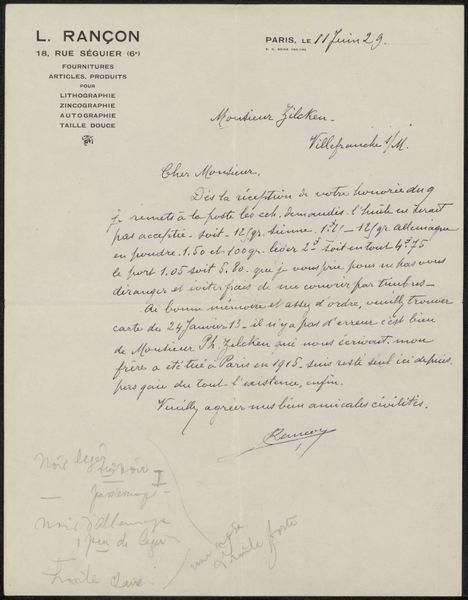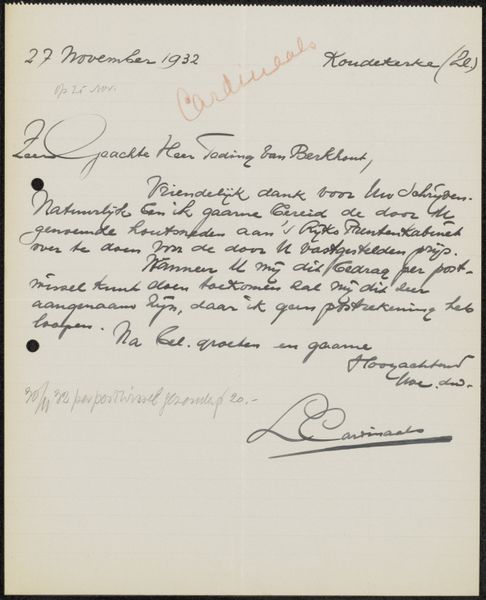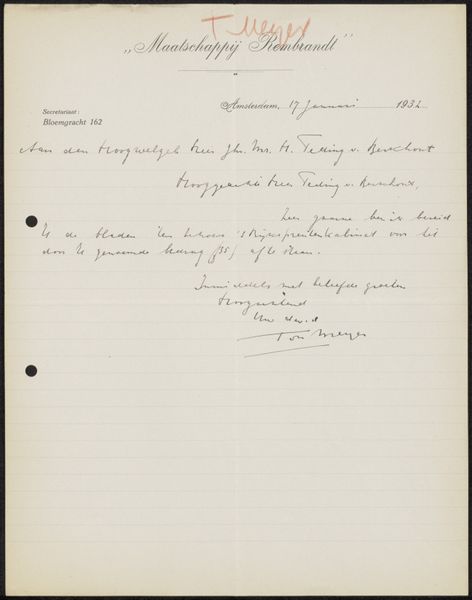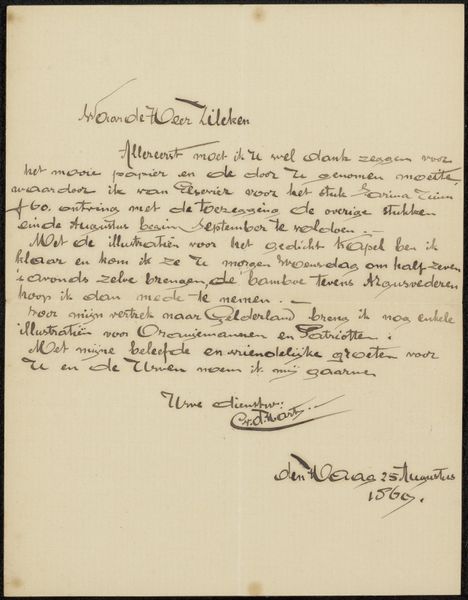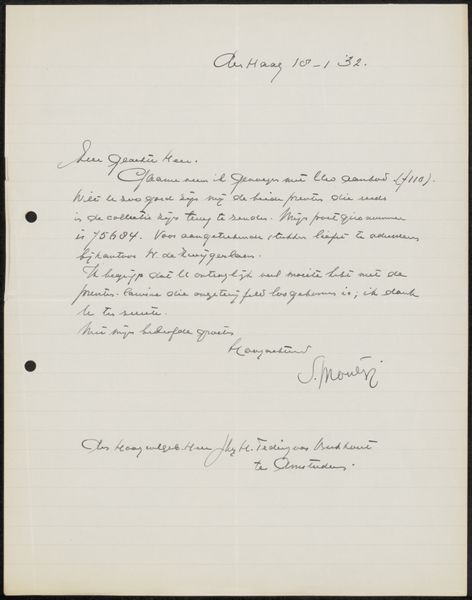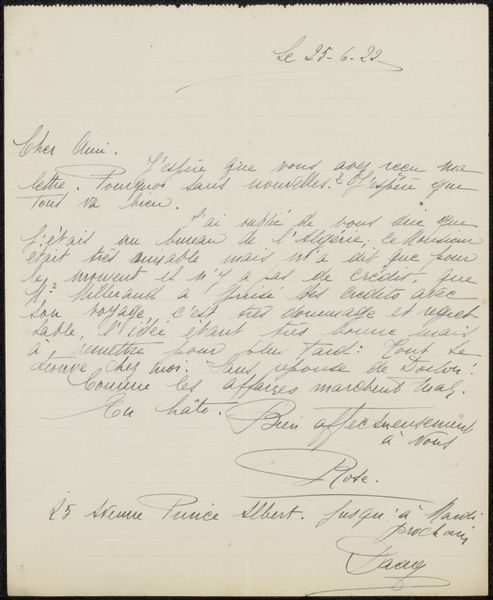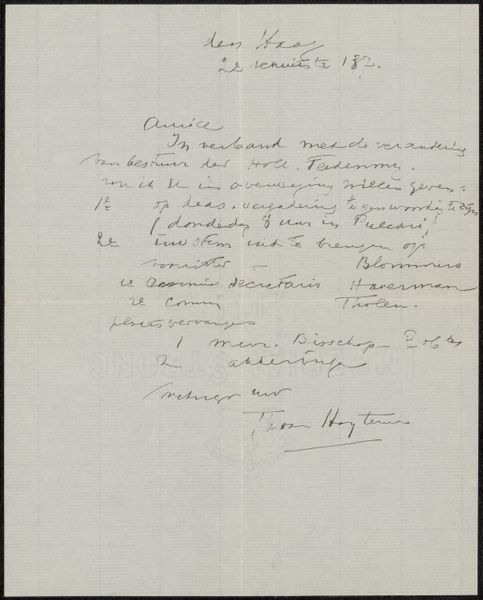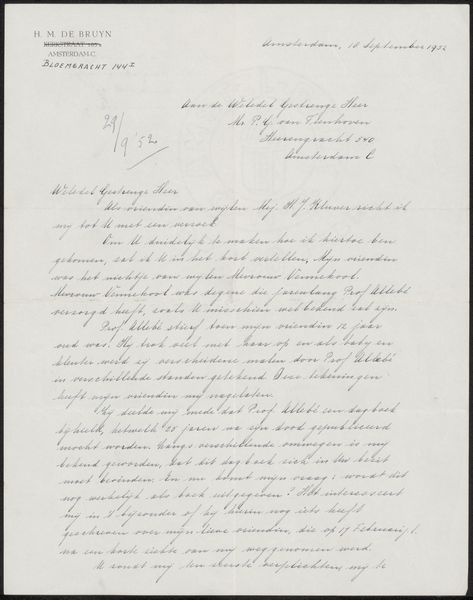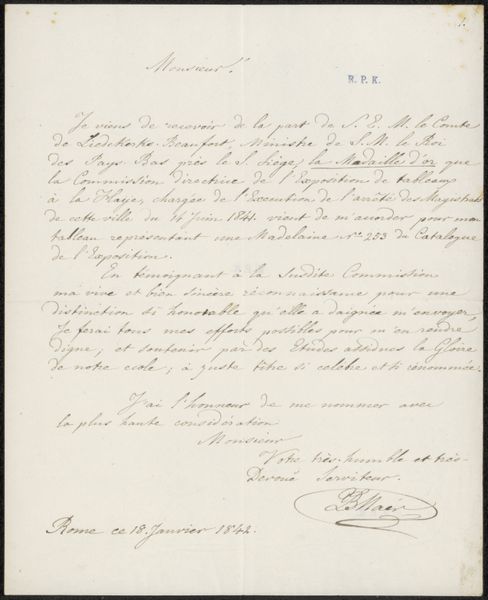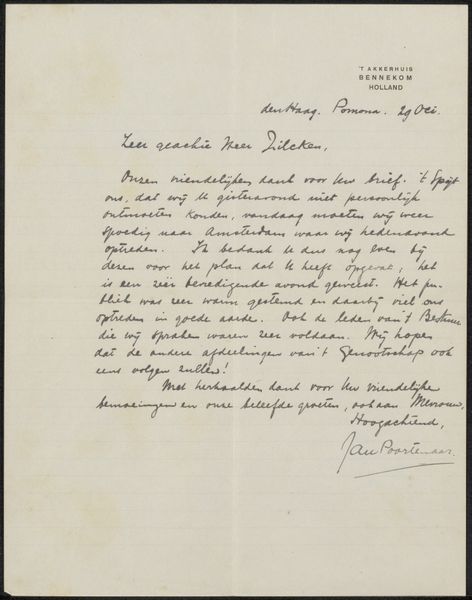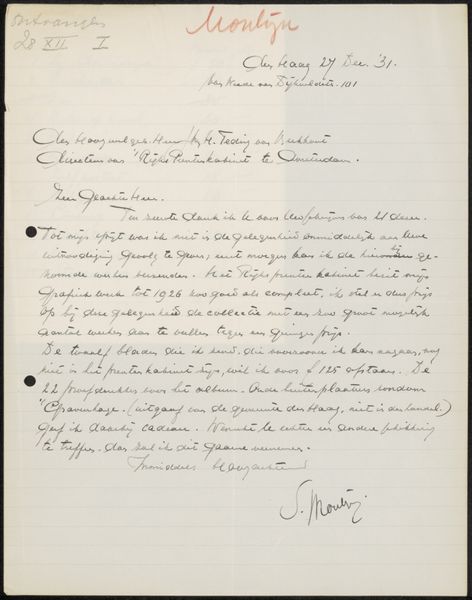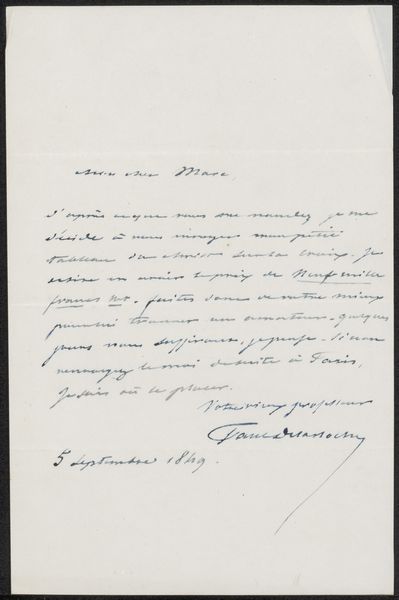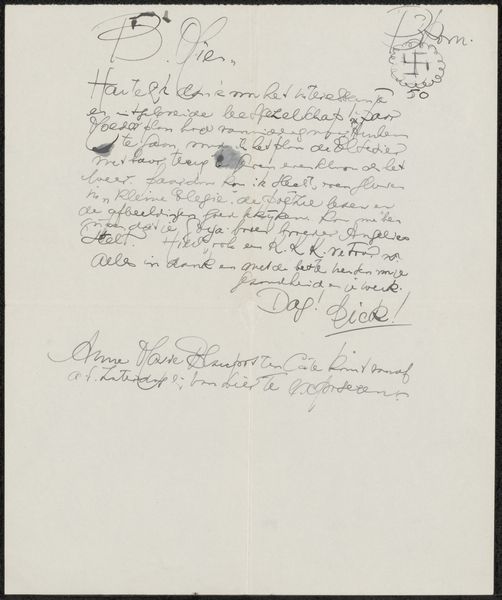
drawing, paper, ink, pen
#
portrait
#
drawing
#
comic strip sketch
#
hand-lettering
#
hand drawn type
#
paper
#
personal sketchbook
#
ink
#
hand-drawn typeface
#
visual diary
#
pen work
#
sketchbook drawing
#
pen
#
storyboard and sketchbook work
#
sketchbook art
Copyright: Rijks Museum: Open Domain
Curator: Nola Hatterman, primarily known for her portraits, likely penned this letter in 1931 to Hendrik Teding van Berkhout. It’s an ink drawing on paper, really a peek into her correspondence. Editor: The raw quality of the ink on paper immediately strikes me. It feels very personal, almost vulnerable, a glimpse into the artist’s daily life. It is just paper, a ubiquitous and disposable material, elevated by labor and careful handwriting. Curator: The act of handwriting elevates the text beyond mere information. The penmanship becomes a performative element, mirroring the artist’s care in crafting the message. Structurally, notice how the alignment and spacing affect readability versus an expressive aesthetic. Editor: Absolutely. Consider, though, how accessible it makes art creation. Anyone with ink and paper could produce something similar—that democratization contrasts sharply with the traditionally revered, rarified space of art objects. You can even notice how much ink has been loaded on the pen for each stroke... Curator: Perhaps. And even the format-- a letter-- points toward how Hatterman frames the letter, visually, a gesture to connect with the viewer by displaying hand-lettering skill as visual texture. This texture is not unlike those found in contemporary personal sketchbooks and visual diaries, offering something more expressive beyond words. Editor: It brings us to her process and to consider what material value the message might carry between individuals from an epistolary exchange. And furthermore, how does that value affect consumption within collection context? Curator: It's about an authentic artistic trace. The interplay of text and image creates an almost intimate experience of seeing her thinking, reflecting an era. Editor: The artist’s handwriting alone emphasizes the tactile dimensions of our material encounter. A powerful, humble message, made physical, where anyone, regardless of means, can feel as though the writer is addressing them personally.
Comments
No comments
Be the first to comment and join the conversation on the ultimate creative platform.

